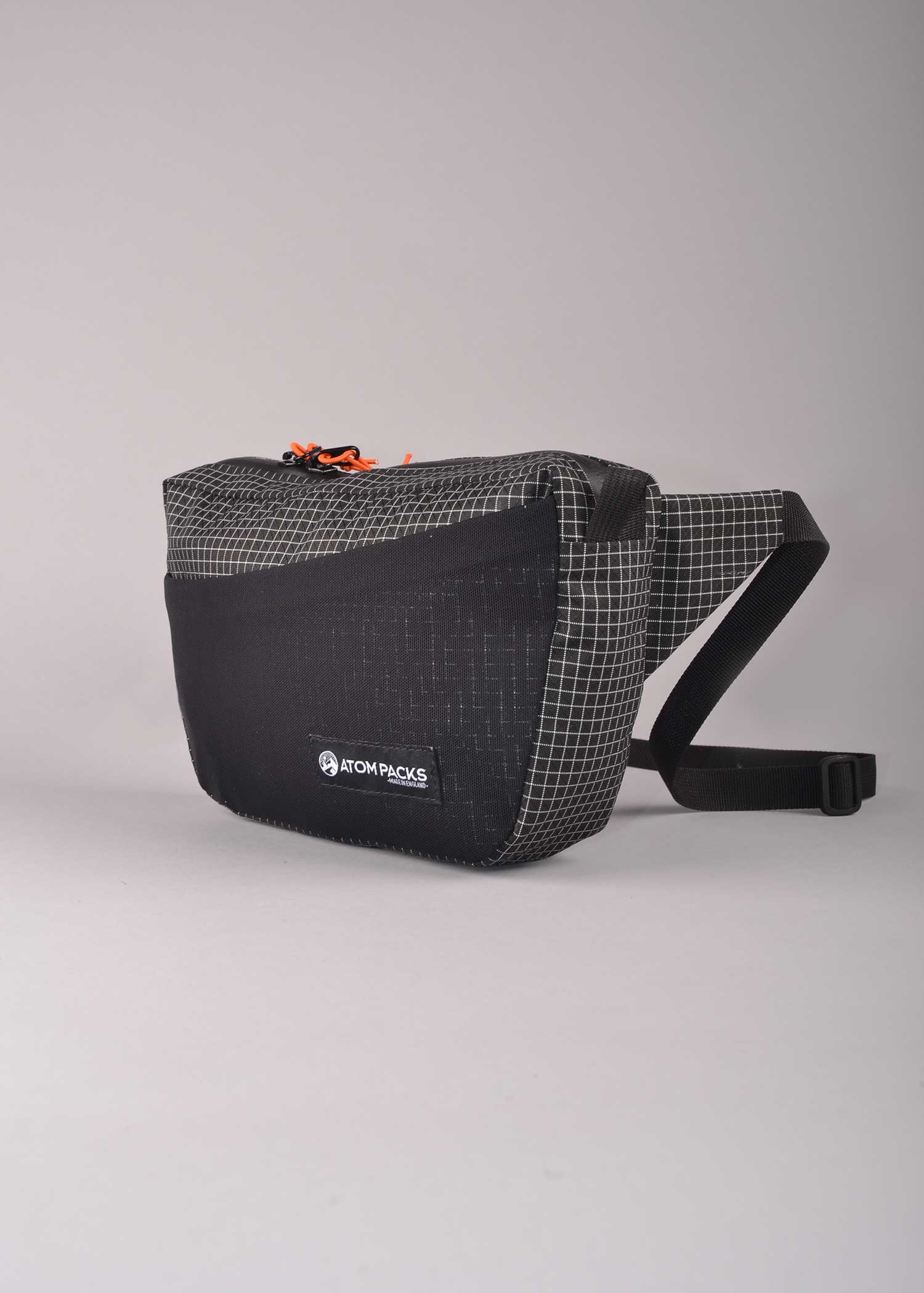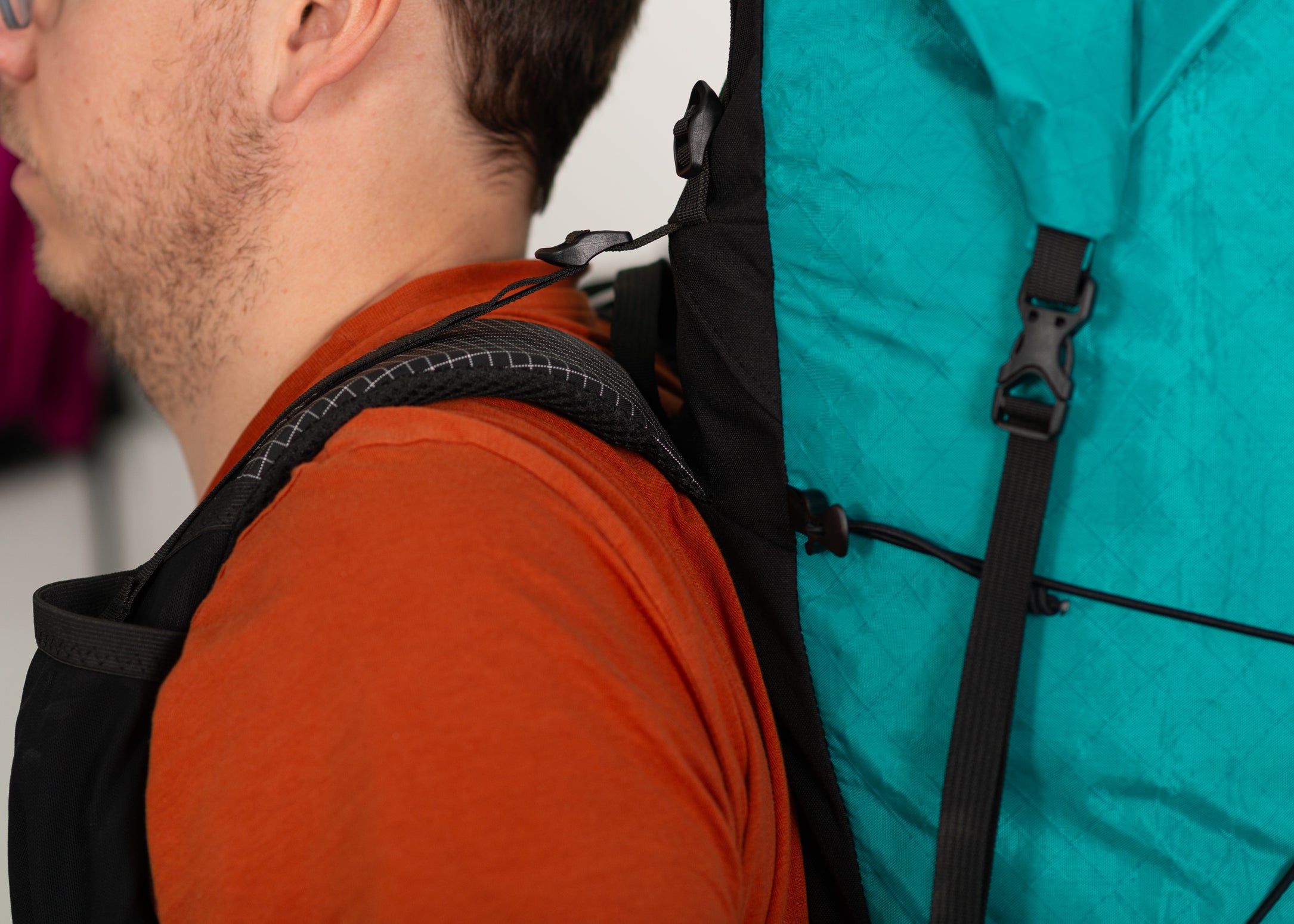Backpack fitment is hard to grasp with an empty pack, so first things first, grab some pillows or clean gear and load 'er up! Don't worry about hitting full trail weight, but aim for 5kg / 12lbs or so so the pack has some body.
Checking the Torso Length
If a backpack fits well you’ll find, with the hipbelt positioned correctly, that the shoulder straps lie in contact against your body and curve nicely over the shoulder. There should be little to no gap between the strap and your shoulder.
Fig 1: An example of perfect fitment (below)

Note: We should always check the fit of the pack with the hipbelt adjusted correctly - this means to the position where you normally wear it. Once the hipbelt is secured, that will let us know whether the straps are sitting correctly.
If overtightened, load lifters can affect the fit of the bag: so, if you have them, slacken them right off for now.
What if my pack is too large?
If your backpack is too large you will find the shoulder straps sit above the shoulders and no amount of tightening will bring them in contact with your body. A too large pack will carry much worse than a too small pack.
Fig 2: An example of too large fitment (below)
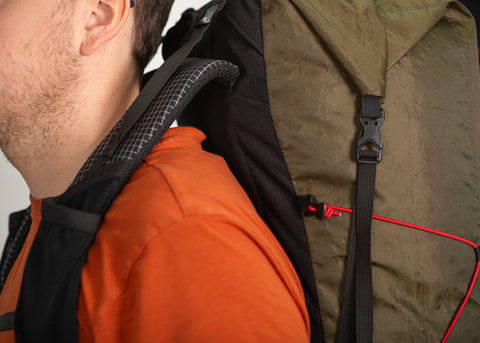
You may find that if you loosen the hipbelt and allow the pack to drop lower, the straps now sit where you want them and can be adjusted correctly BUT your hipbelt now feels too low: This pack is too big for you.
Dexter, the model, is wearing an X-Large pack and needs to size down to a Large to fit his 20 inch torso.
Fig 3: This pack is too big (below)

What if my pack is too small?
A pack that fits too small will often feel okay but, with the hipbelt secured correctly, the attachment point for the straps may be way down your back. The shoulder pockets will be sitting really high, with the top of the elastic being in line or behind the top of your shoulders. This is sub optimum.
Fig 4: An example of too small fitment (below)
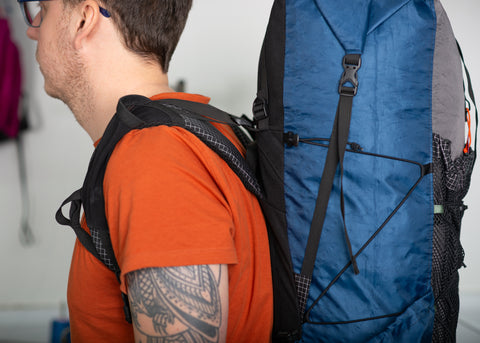
You may find that if you loosen the hipbelt and tighten the shoulder straps to where you want them that the hipbelt now sits too high. This pack is too small for you.
Dexter, the model, is wearing a Small pack and needs to size up to a Large to fit his 20 inch torso.
Fig 5: This straps attachment is sitting too low (below)

Fitting the Hipbelt
A well fitting hipbelt should hug the back, sides and front of your hips. The padding should cover the bony front of your pelvis: there should be at minimum a gap of 8 inches between the pads at the front to allow for weight loss on trail.
Fig 6: Perfect hipbelt fitment (below)
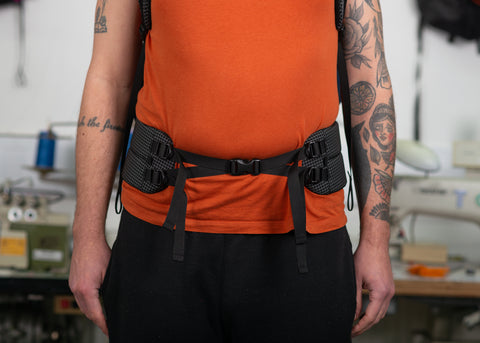
If the hipbelt is too big:
You will find that you cannot get the webbing adjusted tight enough as the padded wings of the hipbelt are close to touching the buckle. Ideally we want a minimum of an 8 inch gap here.
Fig 7: Hipbelt is too large (below)
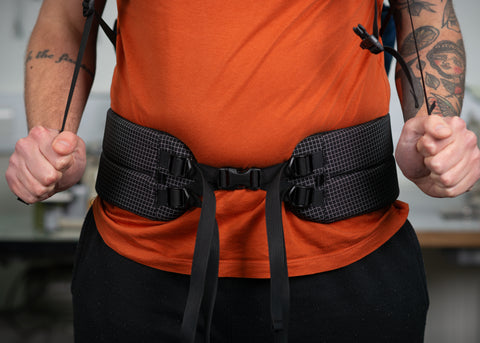
Measure the gap between the wings and size down accordingly - each size drops 2 inches (i.e. if you have a 4 inch gap, drop down 2 sizes, this will give you an 8 inch gap)
If the hipbelt is too small:
The padded wings of the hipbelt will be too far apart, the webbing will be digging into your tummy or the front of your pelvis. Your hipbelt pockets, if fitted, will be far around your sides or even behind you.
Fig 8: the hipbelt is too small (below)

Measure how far apart the hipbelt wings are, and add sizes accordingly - each size you increase by will add 2 inches each time. (i.e. if you have a 14 inch gap, we need to go up 3 sizes to get a gap of 8 inches.)
Need help? Send us an email with photos to hello@atompacks.co.uk


